![]()
| G L
Ashworth & Bros |
Location and period of operation:
|
G L
Ashworth & Bros |
Hanley |
1862 |
1968 |
|
Earthenware, and in particular decorated ironstone, manufacturer at the Broad Street Works, Shelton (Hanley), Stoke-on-Trent, England
|
Previously: Morley & Ashworth
Subsequently: Mason's Ironstone China
![]() 1956 feature
article on Ashworth
1956 feature
article on Ashworth
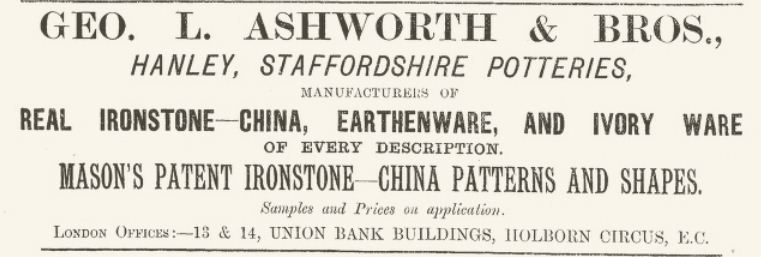
Geo. L.
Ashworth & Bros
Hanley, Staffordshire Potteries
Real Ironstone-china, earthenware, and ivory ware
of every description
Mason's Patent
ironstone - China Patterns & Shapes
The
Pottery Gazette, American and Canadian Edition, January 1st 1880
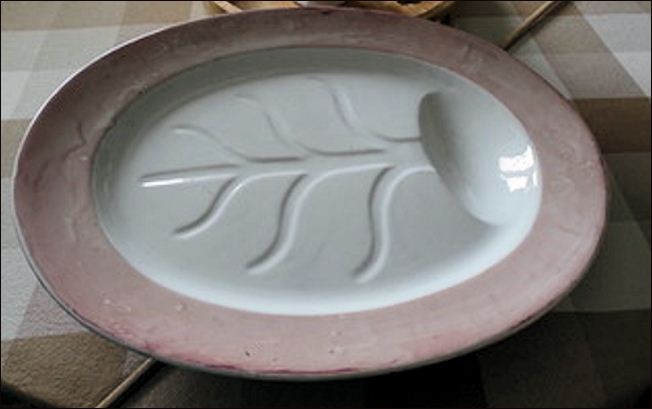 ironstone meat platter |
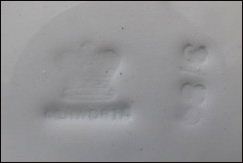 ASHWORTH impressed Ashworth mark The impressed 3/89 is the month/year of
manufacture: |
photos courtesy: Leta Cullen
Marks & initials used on ware for identification:
A. Bros
G. L. A. & Bros.
ASHWORTH
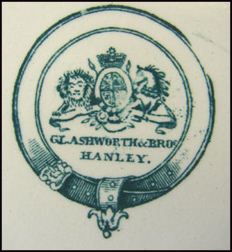
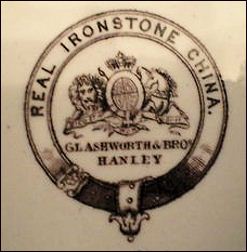
G L Ashworth & Bros
Hanley
belt mark incorporating the Royal Arms
Hanley is the pottery town name where the works were located
1862 to c.1890
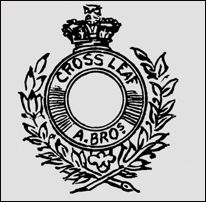 A Bros |
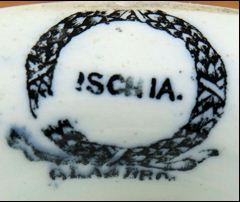 G L A & Bros |
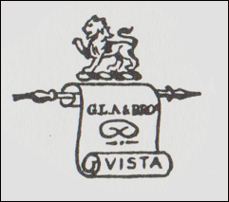 G L A & Bros |
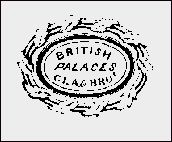 G L A & Bros BRITISH PLACES is the |
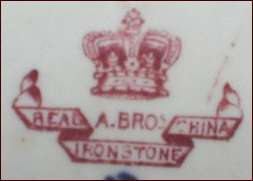 A Bros Real ironstone china |
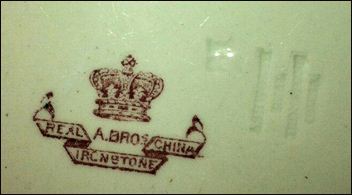 printed mark accompanied by impressed mark Real Ironstone China Ashworth |
typical
marks 1862 to c.1890
|
A number of printed marks were used with the name A. Bros or G.L.A. Bros. Often the pattern name is included. Sometimes an impressed mark was used, with or without a printed mark. |
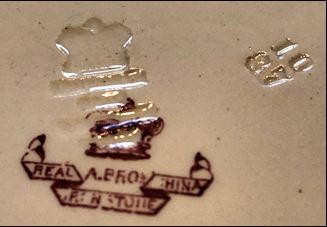
this mark has an impressed month/year of
manufacturer
10/87 for October 1887
|
ASHWORTH |
ASHWORTH |
1862 to c.1890 various designs
of the Royal Arms were sometimes used
often with an impressed ASHWORTH / Real Ironstone China
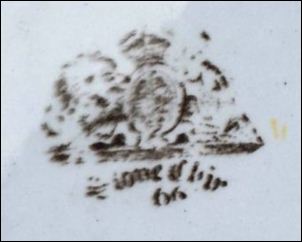 Stone China |
The three line impressed "REAL IRONSTONE CHINA" mark was first introduced by
Francis Morley and continued to be used up to the early years of |
The printed
Royal Arms mark and impressed 'REAL IRONSTONE CHINA' mark
appeared on the same plate.
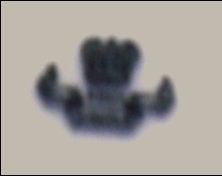
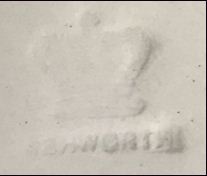
this printed and impressed crown
mark appeared on the same plate
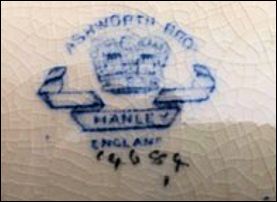
Ashworth Bros
Hanley
England
c.1880+
printed mark incorporating the
town name 'Hanley'
- when 'England' is included the date is 1891+
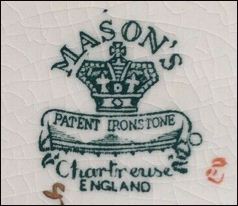
Mason's
Patent Ironstone
England
c.1891+
|
The predecessor Francis Morley had bought the moulds of C. J. Mason, inventor of Mason's Ironstone China. Ashworths continued the original mark used by Masons and also added their own name 'ASHWORTHS' to the mark. Marks with 'England" are dated 1891+ |
 Mason's Ashworth Bros England The registration number 6699105 shows that his pattern was registered in 1919 |
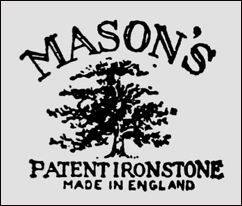 Mason's Patent Ironstone Made in England 1957+ |
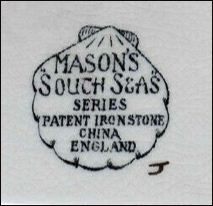 Mason's South Seas Series Patent Ironstone China England 1957+ |
Canteen ware produced for the British Government
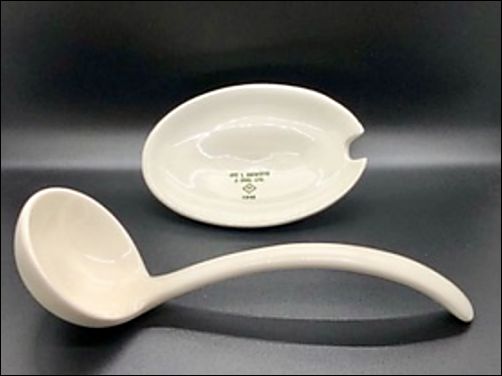 canteen ware - tureen lid and serving ladle with the Royal Cypher GR VI George VI the King of the United Kingdom |
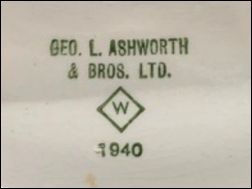 Geo. L. Ashworth & Bros. Ltd W 1940 |
photos courtesy: Nick Coviello
|
The ware shown was produced for and supplied to the British Government; it was ultimately property of the Crown/Government, hence the GR-VI cypher. Ashworth Bros (and others) were given government contracts throughout the late 1930s and into the 1940s (WWII) and produced canteen ware - most likely for the armed services. The ‘W’ within the diamond relates to products products commissioned and produced for the Office of Works (until 1939) and the Minister of Works (post 1940). Such pottery would be used in government canteens. This mark is there to distinguish the piece from being normal ‘utilitarian’ ware for public sale or belonging to any one organisation.
|
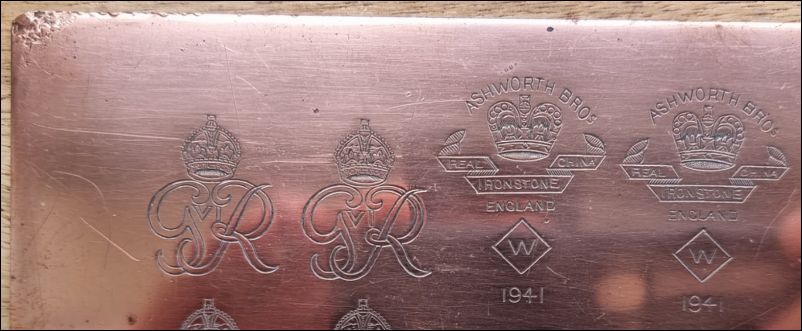
section of an engraved copper
plate, used to make the transfer for the marking
photo courtesy: The Potteries museum & Art Gallery
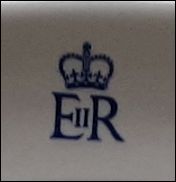 E II R |
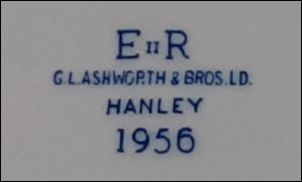 E II R G. L. Ashworth & Bros. LD. 1956 |
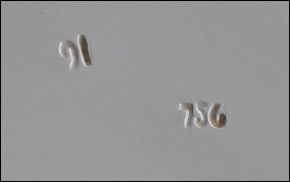 16 756 impressed marks - the '16' is probably a size mark and the 756 will be the month/year of manufacture - in this case July 1956 |
Marks on a large white, ironstone platter produced for the British armed services and canteens (hence the E II R Cypher)
photo courtesy: Lesley Kemp
- see other examples of ware supplied to the armed service -
Information on the Broad Street Works:
- Broad Street
Works -
dates and description of working conditions -
- details of the Broad Street Works -
Questions, comments, contributions? email: Steve Birks